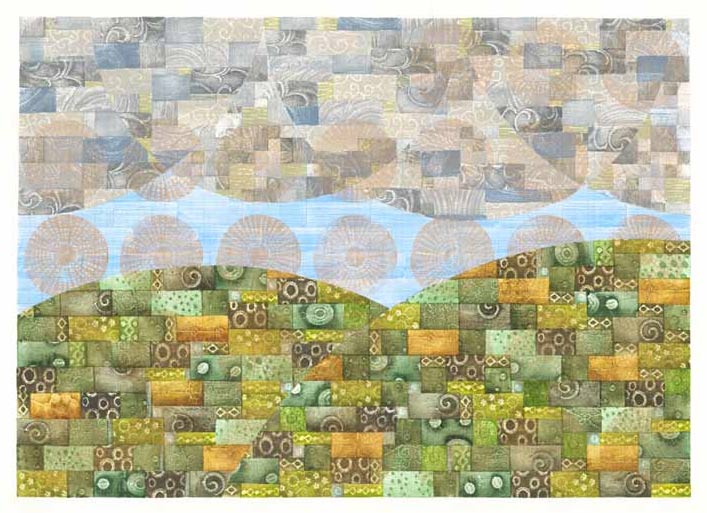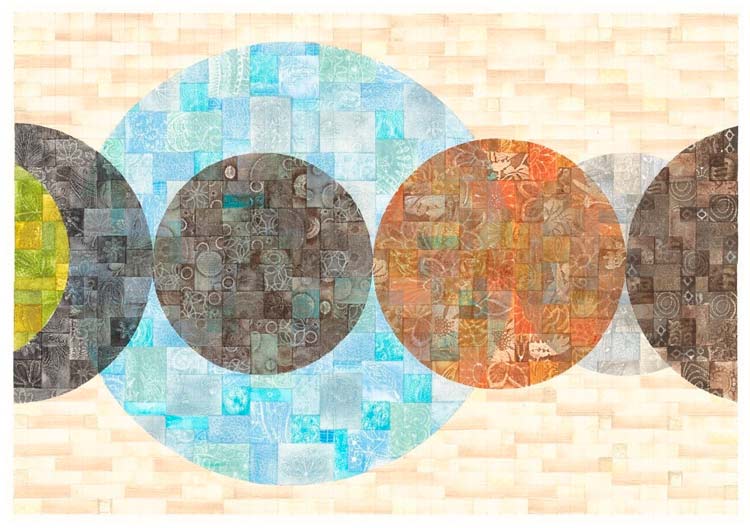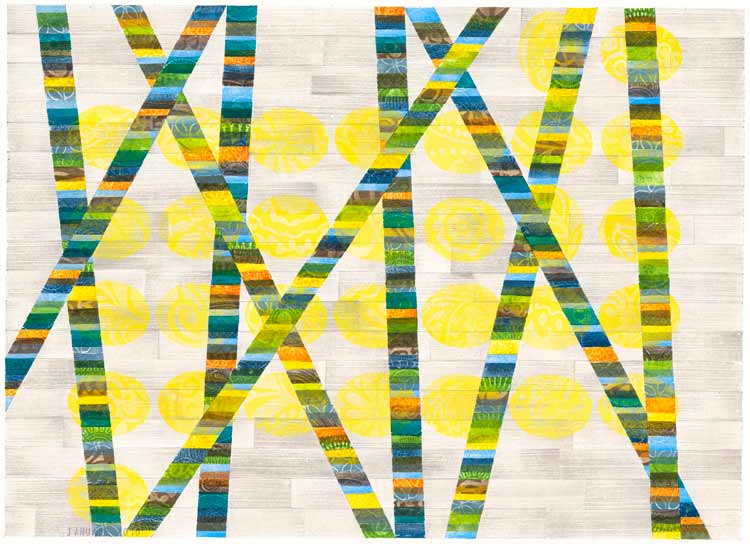
I have been looking for an opportunity to interview Tracy Simpson about her extraordinary potato print “calendars” for quite a while. As a member of the six-person print arts salon Painters Under Pressure, I have watched her work grow and evolve over the course of a decade. Just after opening our current salon exhibit at Phinney Gallery we had the time to sit down at length and talk about her process. What follows is a combination of conversation and correspondence.
From the beginning I have seen connections between your work and that of John Cage. Cage’s work evolved to be the product and process of impersonal systems of chance. This is one way in which he expressed his own sense of spirituality or “zen”: as a path of divorcing his work from the normal sense of self and identification of self with personal preference and personal history. Did this lead to automatism? Coldness? Abstraction only? Hard to say. His music can be aggressively difficult to listen to. But what always comes through to me in his writing, his visual art and his persona is not the automatic or the “no-self,” but a sense of empathy and embrace. There is a kindness in letting go of the personal identification with making art. It can be liberating.
Also, Cage’s work in music is all about time, and not-time, noise and not-noise. In marking time with the structure of a calendar you are indirectly noting its absence and its impending endings. Every month ends on a note, so to speak. The grid structure is not unlike a musical structure, a grid/signature/score with notation. The calendar is scoring the month, even as you physically score the paper. I am interested in how you have chosen a very impersonal structure, the eternal unchanging numbers and grid of the calendar and made it your system. Can you talk about that, about what is impersonal and what is not?

You are right that time is about as impersonal as it gets; time stops for no one, it’s inexorable. And while we may individually have the sense now and again that time is standing still or speeds up for a bit, we know both are illusions or tricks of attention. You are also right that the way time is traditionally organized in terms of seconds, minutes, hours, days, weeks, months, years, and so on, is impersonal. We really don’t get to say hey, I think I’ll step out of time in general or, I’m tired of how we collectively organize time and, really, my way is better so I’ll do that for awhile. For the most part, to exist in the world along with everyone else, we have to surrender to how our particular culture relates to time. So yes, in our culture there is a very set, impersonal structure that developed a long time ago that is partly related to the sun rising and setting and how the moon travels around the planet and partly related to what the collective consciously or unconsciously decided works.
I do like thinking about all that, stepping back and considering what is “natural” in terms of how we as humans relate to time and what we have constructed or imposed for convenience. And what I find even more interesting is how we interact with time. Not only is time the context in which everything happens for us as individuals and for us collectively, but I think there is nothing more personal than how we confront the inevitability of time passing whether it is during a given day or over the uncertain length of a lifetime. What has evolved for me with my art is an ongoing conversation about how I relate to time, its passage, anniversaries, the future, its apparent infinity and my obvious finiteness, how a moment in the morning may color another moment in the afternoon, how a moment in the evening may color my memory of a moment in the morning.
